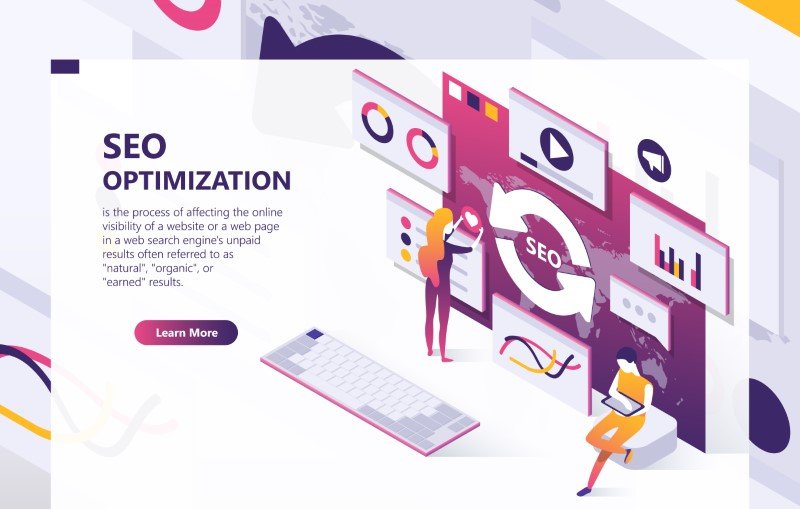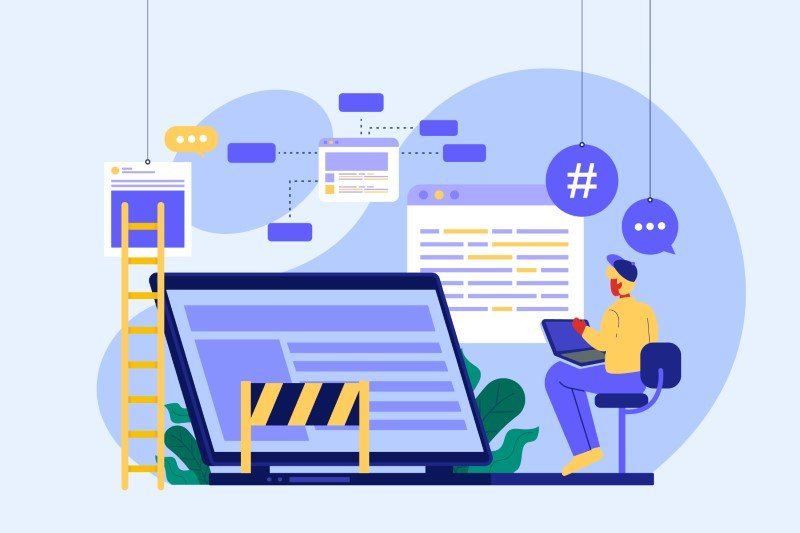In today’s digital age, navigating the world of web applications (web apps) has become an essential skill for both technology enthusiasts and professionals across industries. A web application, distinct from traditional desktop applications or simple websites, is an application program that runs on a web server and is accessed through a web browser over the Internet. Understanding the intricacies of web apps isn’t just about grasping technical jargon; it’s about recognizing their role as pivotal tools in enhancing user engagement, streamlining business operations, and delivering tailored user experiences. This increased reliance on web applications underscores the need for a comprehensive guide that unravels what a web application is, its benefits, and how it contrasts with other digital interfaces such as websites.
As this article unfolds, we will delve into the core aspects of web applications, from the basics of understanding what a web application is to dissecting the benefits it brings to users and businesses alike. We will explore the key differences between web apps and websites—or more broadly, the difference between web app and website—as well as between web applications and other types of applications, clarifying common confusions such as the web application vs website debate. Following this, a closer look at how web applications work will set the stage for insights into developing a web application, including examples of popular web applications that have influenced various sectors. Through this roadmap, you’ll gain the essential knowledge required to navigate the evolving landscape of web applications.

Table of Contents
Understanding What a Web Application Is
Definition of a Web Application
A web application, commonly referred to as a web app, is a software program that runs on a remote server and is delivered to users over the internet via a browser interface. Unlike traditional applications, which are launched by your operating system, web apps must be accessed through a web browser. This means you don’t need to download and install software; instead, you interact with the application over the internet. Web applications can be as simple as a message board or as complex as a multi-tiered mobile application.
Common Examples of Web Applications
Web applications vary widely in their functionality and can be tailored for both individual and organizational use. Examples include webmail systems like Gmail, online retail stores such as Amazon, and social media platforms like Facebook. These applications allow users to interact with the system and perform functions such as sending emails, purchasing goods, or posting updates without needing to install dedicated software.
To make these interactions possible, web apps operate through a combination of server-side scripts (like PHP and ASP) to handle the storage and retrieval of information, and client-side scripts (such as HTML, JavaScript, and CSS) to present information to users. This allows the web app to perform tasks, respond to user inputs, and create an interactive experience.
Web applications are not just limited to desktop computers; they can also be accessed on various devices, including tablets and smartphones, making them highly versatile and accessible. This adaptability is further enhanced by the responsive design of modern web apps, which ensures they work well on any device from anywhere in the world, as long as there is internet connectivity.
Benefits of Web Applications
Accessibility and Convenience
Web applications offer unparalleled accessibility, allowing users to interact with them from any device with internet access, such as smartphones, tablets, and desktops. This flexibility ensures that whether you are at home or on the move, your web applications are always within reach. Moreover, for individuals with disabilities, web accessibility is crucial as it provides equal opportunities to engage with web-based services. Features like screen readers and higher contrast ratios help those with visual impairments navigate web applications more easily, enhancing overall usability and satisfaction.
Cost Efficiency
Developing web applications can be significantly more cost-effective compared to traditional software. Utilizing cloud services for hosting reduces the need for large upfront investments in infrastructure, as you pay only for what you use. Additionally, the use of open-source tools in web development can lower costs further, as these tools often provide robust community support and free updates, which are less expensive than proprietary software.
Cross-Platform Compatibility
One of the standout benefits of web applications is their ability to function across multiple platforms. This is achieved through responsive design frameworks that adapt the application’s layout to various screen sizes and orientations. Ensuring cross-platform compatibility is essential, as it allows your application to reach a broader audience. Testing your web app across different devices and browsers is a crucial step in this process, ensuring that all users have a seamless experience regardless of the platform they use.
Automatic Updates
Automatic updates are a notable advantage of web applications. They ensure that any security vulnerabilities are swiftly addressed without requiring manual intervention from the user. This feature not only enhances the security of web applications but also improves their performance, as updates are often designed to optimize various aspects of the application. Automatic updates provide a hassle-free way to maintain the latest software standards and security practices.
By leveraging these benefits, web applications not only improve user engagement but also offer a more inclusive, cost-effective, and versatile solution for businesses and individuals alike.
Web Applications vs Other Application Types
Mobile Apps
Mobile apps are designed specifically for mobile devices and are available through app stores like Google Play or the Apple App Store. They leverage the hardware capabilities of the device, such as the GPS, camera, and accelerometer, to provide a rich, interactive experience. Mobile apps can operate offline and maintain their functionality without an internet connection, which is a significant advantage over web applications.
Hybrid Apps
Hybrid apps combine elements of both native and web applications. Developers create hybrid apps using web technologies such as HTML, CSS, and JavaScript, which are then encapsulated within a native application. While they can access some of the device’s native features, they don’t perform as well as native apps but offer a compromise between cost and functionality. Hybrid apps are particularly useful for developers looking to utilize the same codebase across multiple platforms.
Native Apps
Native apps are developed for specific platforms using the platform’s native development tools and languages, such as Java for Android or Swift for iOS. This approach allows the app to perform optimally by leveraging the device’s hardware and software. Native apps are fast, reliable, and can interact seamlessly with device hardware, but they require more time and resources to develop compared to web and hybrid apps.
Native apps also have the advantage of being directly installed on the device, which allows them to be more readily accessible from the home screen and function offline. They are often preferred for applications that require intensive data processing or that use complex interactions with device hardware.
How Web Applications Work
Client-Server Architecture
Web applications typically utilize a client-server architecture where the server hosts the application and manages resources while the client requests these resources. This model allows for efficient data handling and resource management across a network. In this setup, the client, which could be your browser, sends a request to the server, which then processes the request and sends back the necessary data. This architecture not only facilitates better resource management but also enhances the effectiveness of workstation power and workgroup empowerment.
Common Technologies Used
Web applications are built using a variety of technologies that cater to both the client-side and the server-side. On the client-side, technologies like HTML, CSS, and JavaScript are commonly used. These technologies allow for the creation of interactive user interfaces. On the server-side, languages and frameworks such as Node.js, PHP, Ruby, and ASP.NET are utilized to handle the backend logic and database interactions. These technologies are crucial in developing robust web applications that are scalable and secure.
Workflow Example
To understand the workflow of a web application, consider a simple web server process: when you enter a URL in your browser, it requests the IP address from a DNS server. Upon receiving the IP, your browser sends an HTTP request to the web server, which then processes this request and sends back the required files, such as HTML, CSS, and JavaScript, for your browser to render the web page. This process exemplifies how client-server interactions are managed in web applications, ensuring that users receive the correct files swiftly to facilitate a seamless web experience.
How to Develop a Web Application
Concept and Planning
Developing a web application begins with a clear understanding of its purpose and the problems it aims to solve. During the initial stages, it’s crucial to gather detailed requirements and perform thorough market research to align the application with user needs and business goals. This stage involves ideation where you refine your concept, assess requirements, and understand the challenges your potential clients face. Planning strategically with flowcharts and sketches helps in visualizing the application’s structure, ensuring that the core functionality meets user expectations and business objectives.
Design and User Experience
The design phase focuses on creating an intuitive and aesthetically pleasing user interface (UI). This involves crafting wireframes and mockups that lay out the visual structure of the web application. A significant emphasis is placed on the user experience (UX) to ensure that the web app is not only visually appealing but also easy to navigate and use. Techniques such as employing a minimalist design and using appropriate color contrasts can greatly enhance the usability and accessibility of the application, making it more appealing to users.
Development Process
The actual construction of the web application involves both front-end and back-end development. Front-end development is concerned with what users see and interact with; it uses technologies like HTML, CSS, and JavaScript to build the interface. Back-end development, on the other hand, deals with the server-side of the application, focusing on databases, server logic, and application integration. This phase is critical as it translates design and functionality into a fully operational application.
Delivery and Maintenance
Once development is completed, the web application undergoes rigorous testing to ensure all features work as intended and the application is free from bugs. After testing, the application is deployed to a server and made accessible to users. Post-launch, it is essential to maintain and update the application regularly to enhance features, improve security, and fix any emerging issues. This ongoing maintenance is crucial for keeping the application relevant and ensuring it continues to meet user needs effectively.
By following these structured steps in the development process, you can ensure that the web application is robust, user-friendly, and successful in meeting its intended goals.
Examples of Popular Web Applications
Gmail
Gmail stands as a prime example of a web application, distinguished by its ability to allow users to access email securely and perform various functions directly within the browser. With over 1 billion active monthly users worldwide, Gmail offers robust features such as composing emails, conducting chats, and managing emails through customizable filters, labels, and deletion options.
Google Workspace
Google Workspace, formerly known as G Suite, integrates a suite of productivity and collaboration tools that cater to business needs. It includes applications like Gmail, Calendar, Drive, Docs, Sheets, and more, all accessible via a web browser. Google Workspace has enhanced productivity by introducing Gemini, an AI tool that boosts productivity within these applications. This suite is ideal for various sectors including business, education, and government, providing tools that facilitate collaboration and data control.
RingCentral Office
RingCentral Office exemplifies a comprehensive cloud communications system that integrates voice, fax, text, conferencing, and online meetings. It offers a seamless experience across all devices, enhancing business communications with features like real-time AI for call notes, business texting, and team collaboration tools. The integration with Microsoft Teams and other applications through the RingCentral desktop app further streamlines workflow by allowing users to manage communications from a single platform.
Starbucks PWA
Starbucks has revolutionized its customer service with its Progressive Web App (PWA), which facilitates a native app-like experience for ordering beverages and managing rewards. The Starbucks PWA is designed to be lightweight and fast, improving load times and performance on mobile devices. It supports offline capabilities, allowing users to view menus and customize orders without an internet connection, and integrates seamlessly with device features like geolocation and push notifications for an enhanced user experience. This PWA has not only improved customer engagement but also demonstrated Starbucks’ commitment to leveraging modern web technologies to enhance accessibility and user-friendliness.
Conclusion
Through our exploration, we have seen that web applications represent a vital component in today’s highly digitized world, offering ease of use, accessibility, and multifunctionality across various devices and platforms. We’ve uncovered the essence of what constitutes web applications, their distinguishing features from other types of applications, and the technologies that power them. This understanding is crucial not just for those directly involved in development but also for users and businesses leveraging these tools for efficiency, engagement, and expansion.
Our journey from foundational concepts to examining examples of impactful web applications, like Gmail and the innovative Starbucks PWA, highlights the transformative potential of these digital tools. By embracing web applications, both individuals and organizations can achieve greater operational fluidity and enhance their ability to respond to evolving technological landscapes. As web applications continue to evolve, staying abreast of these advancements will be imperative for anyone looking to remain competitive and informed in the digital age.
FAQs
Web applications operate on a client-server model where the client (typically a web browser) sends requests to the server. The server then processes these requests and sends back the necessary data to the client. The communication between the client and server primarily uses HTTP (Hypertext Transfer Protocol), which is essential for transmitting web-based data.
The architecture of a web application involves a series of interactions among various components including user interfaces, middleware systems, databases, servers, and the client's browser. This structure enables users to view specific web pages on their devices.
To develop web applications, you need to understand the basics of web programming, which includes JavaScript. Essential skills also encompass building interactive applications, working with databases, utilizing APIs (Application Programming Interfaces), and server-side programming.
To begin creating a web application, follow these steps:
- Identify and define the problem your application will solve.
- Plan your application's workflow.
- Create wireframes or prototypes of your application.
- Validate your application design with potential users.
- Select the technologies and tools you will use.
- Develop the application.
- Thoroughly test the application to ensure functionality.
- Finally, host and deploy your application to make it accessible online.
Get Your Website Free Audit Report Today!
Newsletter
Latest Post

SEO Optimization Companies: Best Picks for 2024

Web Application Basics: Everything You Need to Know


Small Business Bookkeeping: Essential Tips for 2024


